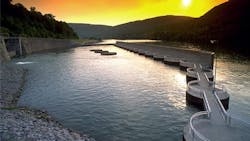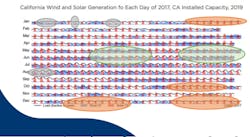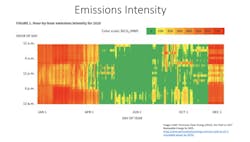Pumped Storage Hydropower: A Clean Energy Necessity
It’s no secret that the energy of the future will be increasingly powered by renewables. In fact, the U.S. Energy Information Administration estimates that the share of electricity from renewables will leap from 21% in 2020 to 42% in 2040.
That’s a major shift in how Americans’ lives will be powered as we move further into the 21st century. And while this change is welcome news for our environment, our fight against climate change, and the well-being of our communities - it also creates new challenges that we must work together to solve.
One of our greatest obstacles will revolve around enabling long duration energy storage. To put it simply, that means creating the right mix of renewables to make sure the lights stay on when the grid is tested by forces like extreme weather. There’s been a lot of fanfare around the growing promise of renewables like wind and solar. At National Hydropower Association (NHA), we also acknowledge their importance in a clean energy grid, but those alone won’t be enough.
Pumped Storage Hydropower (PSH) is part of that solution. PSH operations funnel water from an upper reservoir into an underground control room, where it essentially acts as a giant battery, ready to deploy clean energy as needed, while a discharge tunnel sends additional water into a lower reservoir. PSH is more than a century old, but it remains a key component of the clean energy grid of the future. It makes up approximately 93% of the electric storage generation capability in the U.S., and its benefits are still growing. For example, between 2010-2019, net PSH capacity increased by 1.33 GWs (Gigawatts) from upgrades at six existing facilities.
Take a look at the chart below to get a better understanding of why a clean energy mix that includes PSH is vital.
This chart tracks customer demand and wind and solar generation in California for each day in 2017. It compares that generation versus installed capacity in 2019. The areas shaded in green represent times when wind and solar complement each other well in serving energy load. Days in orange are times when one source is meeting demand, but not the other. The areas in gray, mostly during California’s rainier winters and extreme heat of high summer, represent times when neither wind nor solar are meeting demand. From this example, it’s clear that a broader energy mix is needed. What’s more, even in days where solar and wind can complement each other to serve load, the grid still needs technologies to provide other services such as spinning reserves, and PSH plays a role there as well.
To explain the necessity of PSH even further, take a look at the additional chart below that helps to visualize the importance of bolstering our clean energy grids. This image represents hour-by-hour emissions intensity over the course of a year for a grid with a clean energy requirement from Peninsula Clean Energy. Throughout much of the warmer months, these renewables do well in meeting demand, as represented by the green parts of the chart. However, in the winter and early spring, when many parts of the country endure major storms and shorter days, these renewables struggle to meet that demand. Once again, PSH can help fill those gaps – with massive capacity waiting in the wings to complement its renewable partners, like wind and solar.
One doesn’t need to look far to find other examples of our grid being tested during periods of unfavorable weather. Winter Storm Elliott, which ripped through the U.S. last winter, bringing high winds, snowfall and record cold temperatures, also caused extreme stress on energy output. An analysis from PJM showed that hydro power fared among the best against other forms of energy during the worst of this severe weather outbreak.
There’s also major room to grow PSH even further. The U.S. still has 35 TWh (Terawatt hours) of unused, cost competitive, closed-loop PSH potential outside legislatively protected wilderness – much of it in the American west. This closed loop version of PSH recycles water between two reservoirs.
Despite these opportunities, challenges persist in scaling up this important form of energy; that includes long lead times for development and a lengthy licensing process. That’s why NHA is working hard to support and ultimately pass legislation in Congress meant to streamline licensing and relicensing for the industry.
Pumped Storage Hydropower is a keystone of the clean energy transition. Its proven reliability not only helps its renewable partners like wind and solar; it also provides people across the world with the confidence to know that their energy grid won’t fail them – especially during times when it’s needed most.
Michael Purdie is National Hydropower Association’s Director of Regulatory Affairs and Markets Committee. Mike was formerly with Dominion Energy where he advocated for Dominion Energy’s interests at PJM, ISO-NE, and NEPOOL stakeholder venues. Before Dominion Mike worked at the Nuclear Energy Institute and the Nuclear Regulatory Commission.
About the Author
Michael Purdie
Michael Purdie is National Hydropower Association’s Director of Regulatory Affairs and Markets Committee. Mike was formerly with Dominion Energy where he advocated for Dominion Energy’s interests at PJM, ISO-NE, and NEPOOL stakeholder venues. Before Dominion Mike worked at the Nuclear Energy Institute and the Nuclear Regulatory Commission.



